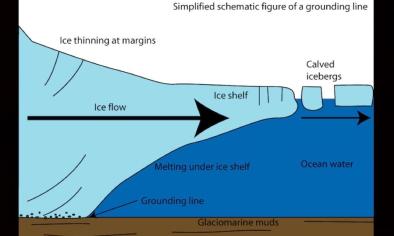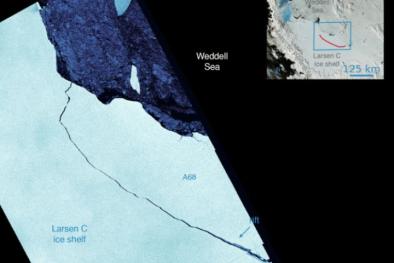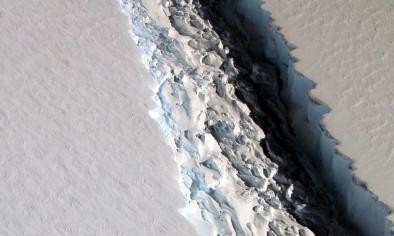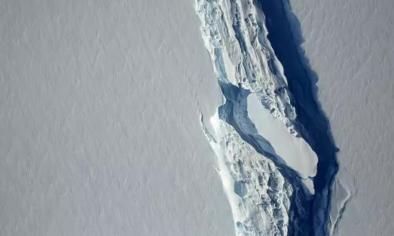Scientists Know How Big the Larsen C Iceberg Will Be
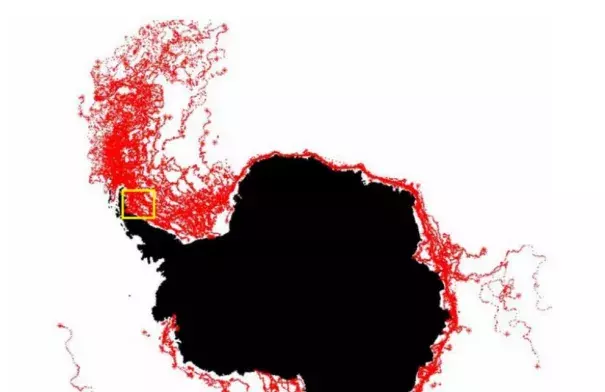
It’s the final countdown. The European Space Agency said on Wednesday that just three miles separate the Larsen C crack — a rift slicing the front off a major Antarctic ice shelf — from open water. Like a tailor with a tape measure, scientists have been measuring the crack using ESA satellites. The next Sentinel-1 satellite pass will happen later this week, providing a high-resolution look at whether the Larsen C ice shelf has finally calved an iceberg.
...
Beyond monitoring the threat to mariners, scientists will be intently checking on what remains of the Larsen C ice shelf. The iceberg-to-be represents approximately 10 percent of the ice shelf’s area. Losing that much mass at once is likely to change how the ice shelf behaves and scientists will be watching closely to see if more icebergs form or if the shelf exhibits other signs of weakness.
If the ice shelf does eventually disappear, it could accelerate the rate of sea level rise by unleashing a torrent of ice currently clinging to the Antarctic Peninsula. It’s a story playing out not just with Larsen C, but with other ice shelves around Antarctica as warming waters and air driven by climate change cut them down to size (though the Larsen C rift is likely due to natural causes). Their continued health is one of the key factors in determining how much oceans will rise.
Related Content
